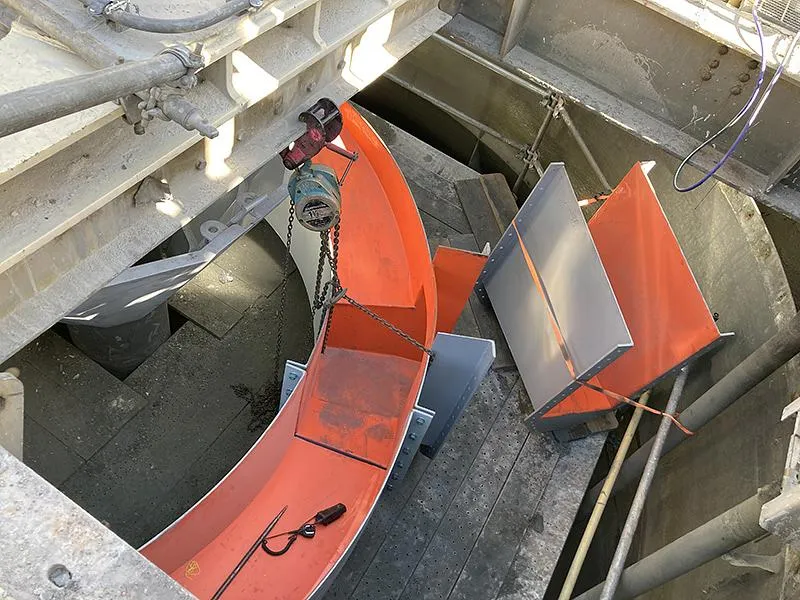(April 19, 2022) Bagdad is increasing copper and molybdenum production one bubble at a time.
Last year, Bagdad upgraded its flotation process with something called central launders, which help capture even more concentrated copper- and moly-rich froth as it exits the flotation tanks. A central launder essentially is a metal trough installed in the center of the flotation tank near the top and is designed to lessen the distance bubbles travel to be collected as concentrate.
The launders aren’t exactly new for the company, but the benefits of the $1.7 million investment were ideal for Bagdad, said Graham Cooper, former Manager, Concentrator-Bagdad, who is now in the same role in Sierrita.
“Central launders are something we’ve been working with as a company,” Cooper said, noting that he has seen the launders in action at Cerro Verde.
"It made sense to bring them to Bagdad. These new launders get higher recovery,” he said.
The flotation process begins after sulfide ore is blasted from the ground and milled into the consistency of beach sand. It then is mixed with water and reagents to create a slurry that is pumped with air as it circulates inside one of a series of a dozen flotation cells.
The air creates a gray, bubbly froth, which the copper and moly attach to. However, the longer the bubble sits within the tank, and the farther it must travel to fall into a collector, the greater the likelihood it may burst and lose the copper and moly to the tailings below.
Last summer, Bagdad installed the last of its central launders to shorten the distance froth now must travel to be collected as concentrate. With the launders, the froth bubbles have half the distance to travel, resulting in increased copper and moly recovery.
Project pays for itself
“The original test work showed more than a 1 percent increase in recovery. This project literally paid for itself in about two months,” Cooper said. “We demonstrated pretty early on that this gave us more copper recovery.”
Part of that increased recovery is due to the launders now capturing coarse particles larger than 300 micrometers. It’s a welcomed milestone for the company and site.
“Coarse particle recovery is a problem — especially particles larger than 300 micrometers,” said Weiping Liu, Metallurgist II-Phoenix. “Normally, we aren’t able to recover them. It’s the common challenge in the mining industry.”
The project is part of Bagdad’s larger effort to increase production through capital projects and a larger amount of employee-driven process improvements. Last spring, Bagdad also brought its new crusher online, and with more material being processed, the site needed to ensure its flotation process is running as efficiently as possible.
“This was a great project,” said Leonard Hill, Director, Metallurgy and Strategic Planning-Phoenix.
“One of the best parts about it was that it was collaborative effort. We had collaboration at all levels – inside and outside of the company to make this come together. This never would have happened without the site driving and taking charge of it.”
